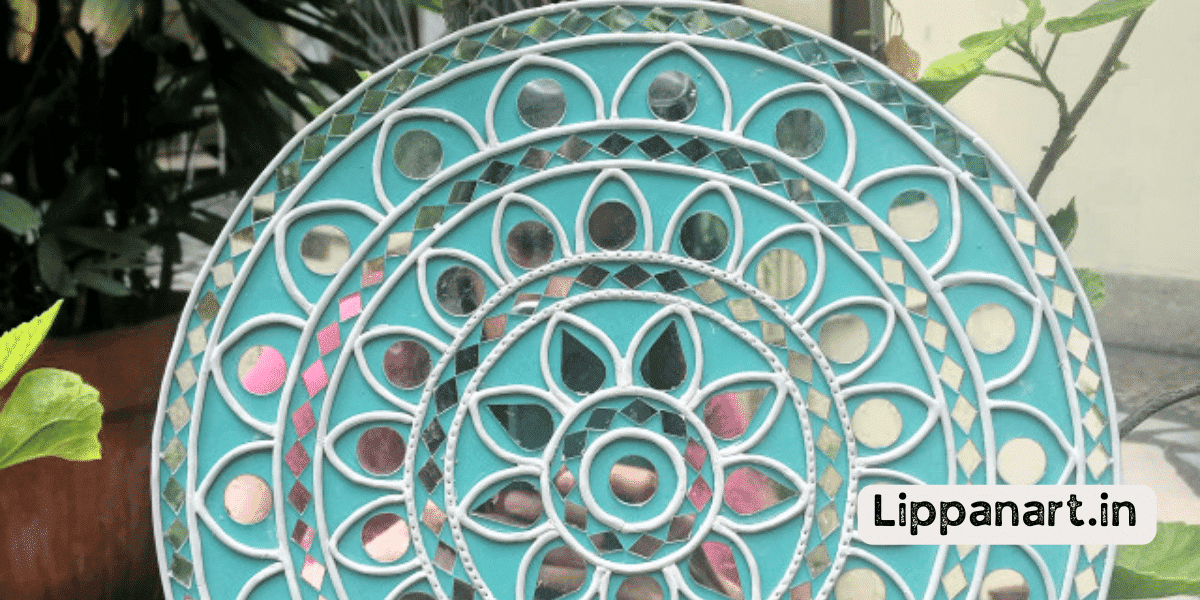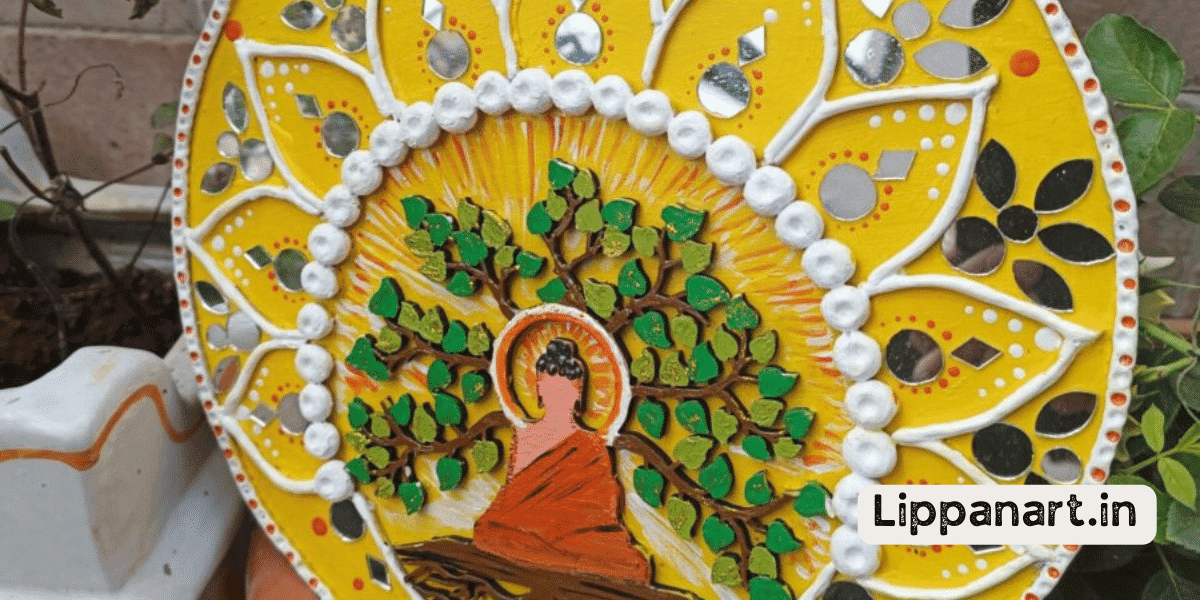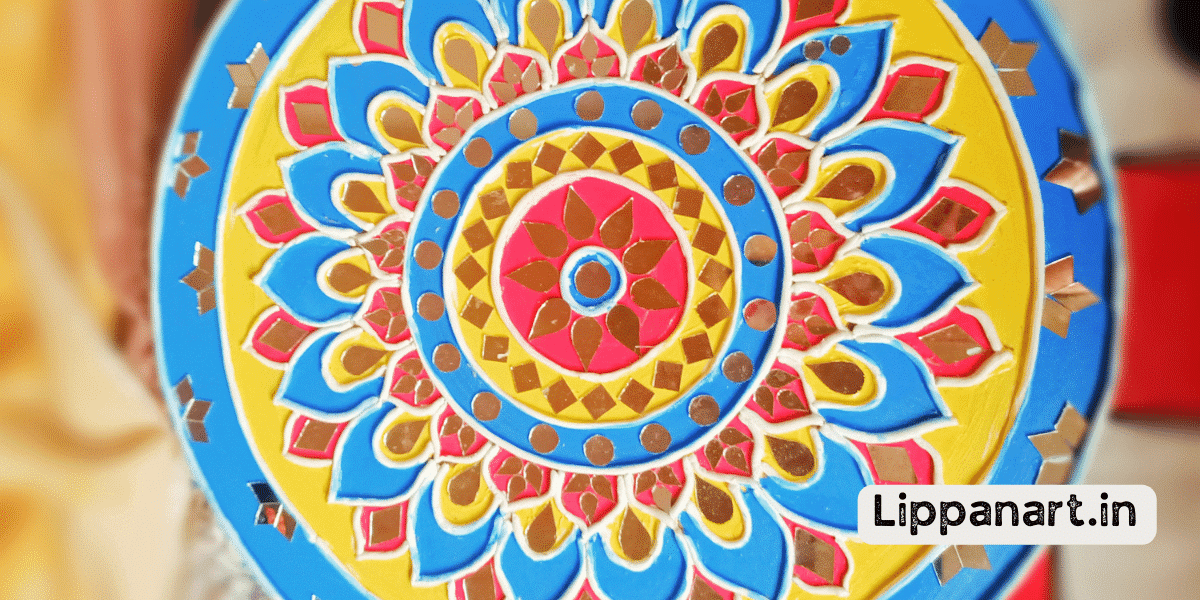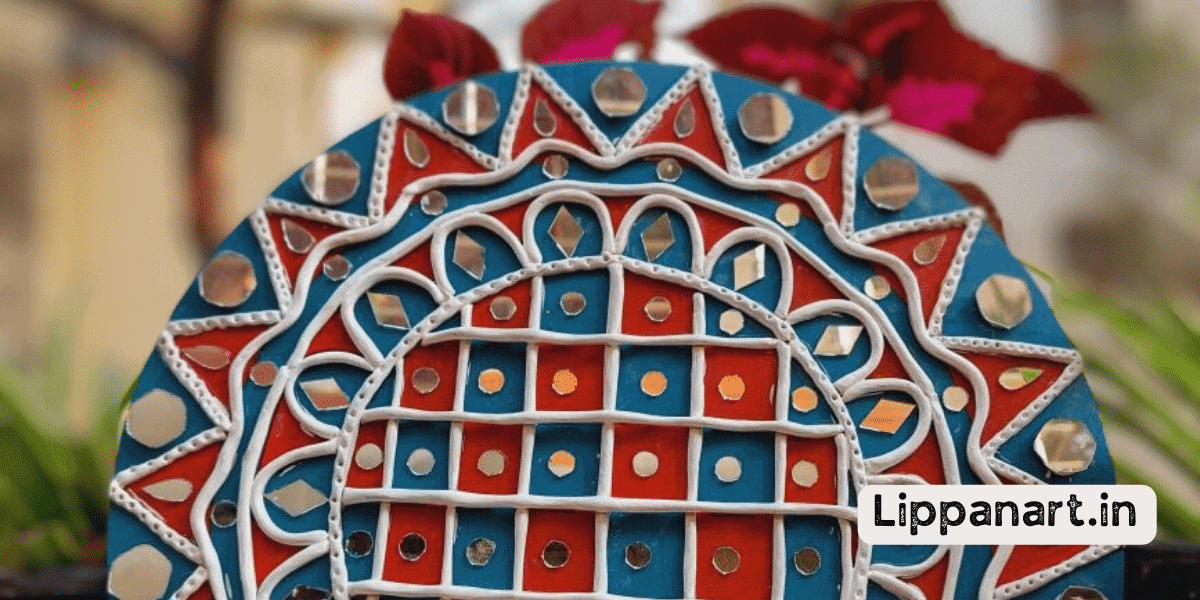Flowers are often seen as a metaphor for life itself – beautiful, delicate, and fleeting. But when it comes to art, flowers can take on a much more powerful meaning.
From meaning, faith and devotion to conveying love and emotion, the symbolism of flowers has long been used by painters, sculptors, and illustrators to create stunning works of art.
From the Renaissance to the Impressionist era and beyond, discover how artists have used flowers to express their innermost thoughts and feelings.
Key Takeaways
- Flowers in Western art often symbolise religious themes, such as the purity of the Virgin Mary and Christ’s sacrifice and wounds.
- Flowers are used in still-life paintings to represent the transience of life and the passing of time.
- The Golden Age of Botanical Illustration contributed to both art and science, with botanical illustrators striving to portray the ideal version of each plant.
- In the Victorian Era, floriography became popular to send secret messages using flowers, and artists incorporated hidden botanical symbolism in their paintings.
Flowers as Symbolism in Art: An Overview
You may have noticed that flowers have been used as symbols of various things in art throughout the centuries. From the white lilies of the Virgin Mary to the red roses of Christ’s sacrifice, flowers have been used to express religious devotion and emotion. But that’s just the tip of the iceberg. In their pieces, artists have used flowers to represent transience, mortality, love, and even secret messages.
The process of creating flower symbolism in art is incredibly complex. Each flower can convey a different meaning depending on its colour, type, and season. For example, during the Victorian era, red roses symbolised love, darker roses indicated shame, and pink roses suggested keeping love a secret.
Pre-Raphaelite artists, like William Morris, often incorporated hidden botanical symbolism into their works to convey messages. 17th-century Dutch still-life painters used wilting flowers to symbolise the ephemeral nature of life, while botanical illustrators of the Golden Age displayed the beauty of flowers frozen in time.
Flowers in art have come a long way since their religious beginnings. Whether they symbolise a message, emotion, or the process of transience, we can appreciate the beauty and creativity of each artist’s unique piece.
The Language of Flowers: How Artists Use Symbolism
Through the centuries, artists have used flower symbolism to communicate secret messages and emotions. Flowers have been a powerful tool to convey meaning, from the white lilies representing the Virgin Mary’s chastity to the red roses signifying Christ’s sacrifice.
Here are four ways flower symbolism is used in art:
- As a reminder of mortality, Wilting flowers in still life paintings from the 17th century Holland symbolise life’s ephemeral nature.
- To capture the moment’s beauty, Botanical illustrations and vibrant bouquets of fresh flowers showcase life’s transient and eternal aspects.
- To communicate secret messages: During the Victorian era, books outlined the meanings associated with different types of blooms, allowing people to communicate through flowers.
- To explore the human experience: Flowers as a subject of art in the 19th century allowed artists to explore the complexities of the human mind and experience. It also opened doors to art therapy, allowing people to express their emotions creatively.
In all, the language of flowers is a timeless art form that continues to convey messages and emotions in unique and meaningful ways.
Floral Symbolism Across Cultures and Eras
You may be familiar with the symbolism of flowers in Western art, but have you ever wondered what flowers mean in other cultures and eras?
From ancient Egypt to Renaissance Europe and the modern world, flowers have held a variety of meanings across cultures.
Ancient Egyptians viewed flowers as symbols of rebirth and fertility, while flowers communicated emotions and thoughts during the Renaissance.
Today, flowers are still used to convey feelings and can range from a simple token of appreciation to a declaration of undying love.
Ancient Egypt
In Ancient Egypt, lotus flowers were seen as a symbol of rebirth and renewal. Throughout the culture, the lotus was seen as a source of creativity, allowing new lives, ideas, and art forms to emerge. This is evidenced through artefacts such as the Narmer Palette from the late fourth century BC. Additionally, even in modernity, the lotus flower is associated with innovation, as Arthur Danto argues in his 20th-century philosophical works.
Here are four ways the lotus flower symbolises rebirth and renewal in Ancient Egypt:
- Representation of the sun: The lotus flower was often associated with the sun, the source of new life, and its petals were thought to represent the day’s segments.
- Creation of the world: The lotus flower was considered the source of Atum’s creative power and was thought to have been used to create the world.
- Rebirth of the soul: The lotus flower was thought to represent the life cycle of the soul, with its petals representing the stages of life.
- Renewal of the pharaoh: The lotus flower was seen as a symbol of the pharaoh’s power, with its blooming representing the renewal of his reign.
- Editor’s Choice
- Best Seller
- Amazon Choice
Renaissance Europe
During the Renaissance, flowers were seen as a representation of life, beauty, and fertility. They were often used to decorate galleries and churches and to adorn the clothing of the wealthy.
19th-century psychoanalyst Carl Jung believed flowers could evoke powerful, emotional and spiritual aesthetic experiences. This idea was echoed by the work of Baroque artist Elisabetta Sirani, who often used flowers in her paintings to evoke themes of resurrection and rebirth.
In the 21st century, flowers continue to be used in art to evoke various emotions and meanings. Whether it represents innocence, love, or life’s fleeting beauty, flowers symbolise inspiration and creativity.
Modern World
Today, modern art celebrates flowers as symbols of beauty and joy. They are often used to express life’s fragility, emotions’ complexity, and nature’s power. From creative processes that capture the fleeting beauty of flowers to artistic creations that explore the emotional experiences of the human experience, flowers have become a powerful tool for conveying meaning.
Here are four ways flowers play a role in modern art:
- Symbolism of Flowers: Using white lilies and red carnations to represent purity and devotion.
- Depicting Transience: Wilting flowers symbolise the ephemeral nature of life.
- Botanical Illustration: Documenting plant species and capturing the beauty of flowers in art.
- Floriography: Sending secret messages through the language of flowers.
Flowers have become an integral part of modern art, allowing us to explore and express the complexity of the human experience.
Hidden Meanings: Decoding Flower Symbolism in Art
Have you ever noticed the types of flowers that appear in art pieces? From the white lilies of the Virgin Mary to the red roses of Christ’s sacrifice, flowers have long been used as symbols with deep and meaningful cultural significance.
Artists in different eras and cultures have used flowers to represent everything from love and devotion to mortality and transience.
Through the careful observation of these blooms, we can decode the secret messages and meanings that the artist was trying to convey.
Types of Flowers
Flowers have long been a popular subject of art, with different species symbolising different meanings.
Here are four ways flowers are used in art:
- Symbolism of Flowers in Western Art
- Depicting the Transience of Life through Flowers
- The Golden Age of Botanical Illustration
- Secret Messages of Flowers in the Victorian Era
Artists use flowers to represent ideas and provide insight into art’s meaning. Through their work, viewers can gain a deeper understanding of everyday life and the benefits of art.
Flowers are a powerful piece of art, with each species conveying a unique message.
Artistic Representations
Throughout history, artists have used flowers to represent ideas and emotions creatively. From the symbolism of flowers in Western art to the use of floral motifs in Pre-aphaelite paintings, flowers have inspired many.
The 19th century saw a renewed appreciation for flowers as a subject of art, with French Realists and Impressionists painting everyday scenes and objects. Édouard Manet, a leading figure of this movement, dedicated a significant portion of his artistic output to still lifes, including flowers.
Creating art with flowers is a unique and creative experience that taps into the human mind and its capacity for innovation. In the third century, the artistic experience of painting flowers was further explored, giving birth to new styles and techniques that continue to fascinate viewers today.
Cultural Significance
Flowers have long been symbols of culture and tradition, often taking on different meanings in different societies. From the Virgin Mary’s lily to the Victorian secret messages of roses, flowers have been used in art pieces for centuries.
Here are four ways that flowers have been used in art:
- Symbolism in Western Art – White lilies and red carnations have long been symbols of love, devotion, and mortality.
- Transience of Life – Dutch still-life paintings often featured wilting flowers to symbolise the ephemeral nature of life.
- Botanical Illustration – Botanical illustrations in the 18th century documented various plant species.
- Victorian Messages – During the Victorian era, flowers were used to send secret messages.
Flowers have been a beautiful form of expression throughout history, representing different aspects of daily life. From ancient symbolism to current ideas, the cultural significance of flowers in art has always been a fascinating topic.
Flowers in Renaissance Art: Iconography and Significance
You’ll find that flowers play an important role in Renaissance art, with different species symbolising various iconographic meanings. Flowers were used to express religious themes and signify love and mortality. Artists like Botticelli and Raphael often included blooms to combine symbolic elements and create a unified composition. Flowers also often appeared in portraits of royal families, where their presence and meaning could be interpreted differently.
| Form of Therapy | Definitions of Art | Exposure to Art |
|---|---|---|
| Enhancing Mood | Aesthetic Objectives | Cognitive Benefits |
| Stress Relief | Creative Expression | Social Benefits |
| Improving Health | Meaningful Symbolism | Cultural Impact |
In addition to the religious and romantic connotations, flowers in Renaissance art were sometimes used to show the fragility of life. Images of children suffering or in moments of joy were often accompanied by blossoms, representing the ephemeral nature of youth. Flowers also provided therapy for artists, allowing them to explore their creative expression and express their feelings about the world around them. Through its symbolism and history, flowers in Renaissance art continue to be a powerful tool for conveying emotion and meaning.
Floral Allegories: Understanding Artistic Symbolism
Floral allegories are a way of representing complex ideas through symbolic representations of flowers in art. Fellow artists often use these allegories to communicate deeper meanings about their work and expose viewers to various art forms. Through their artistic ability, they can show people the hidden message behind each flower.
Here are four ways to understand the symbolism of flowers in art:
- Look for traditional symbols associated with flowers in various forms of art.
- Consider the context of the artwork, such as the era in which it was created.
- Pay attention to the colours used to represent the flowers.
- Analyse the relationship between the flowers and the other elements in the painting.
- Editor’s Choice
- Best Seller
- Amazon Choice
Emotions and Flowers: The Emotional Impact in Art
You may have noticed that the colours and shapes of flowers often carry symbolic meanings in art. From the symbolism of white lilies in Christian art to the emotional expression of red roses in poetry, flowers have been a powerful source of artistic expression for centuries.
Paintings, poetry, and literature often feature flowers representing emotions and feelings, from joy to sadness and love to grief. Historical artists such as Édouard Manet have used flowers to explore the transient nature of life, while Pre-Raphaelites often used them to convey secret messages and emotions.
Thanks to their delicate beauty and emotional resonance, flowers continue to be a powerful source of inspiration for many artists today.
Color & Meaning
Different colours of flowers can carry various meanings in art. For example, white lilies symbolise purity, while red carnations represent love. By exploring the societal segregation of art through colour, we can understand the emotional impact it can have.
Here are four ways to explore this concept:
- Expose yourself to more art galleries and take notice of the colours used.
- Research the meaning behind certain colours and look for hidden messages in paintings.
- Use creative ideas to explore the emotions connected to specific colours.
- Be aware of how art can influence your own emotions through the use of colour.
Through this exploration, we can obtain insight into the power of art to evoke emotion and create meaningful connections.
Symbolism in Paintings
Through symbolism in paintings, you can discover hidden meanings and emotions in artworks. Symbolism allows artists to use creation to express an idea or feeling in an artwork.
Drawings by artists have a unique ability in composition to convey a message in a subtle, yet powerful manner. In this expressive process, flowers can symbolise human emotion and convey ideas in various artworks.
For example, white lilies often symbolise the Virgin Mary’s innocence and purity, and red roses represent Christ’s sacrifice.
Through the use of symbolism, viewers can discover the deeper meanings in an artwork and gain insight into the artist’s intentions.
Poetry & Blooms
Poetry and blooms go hand-in-hand, as the beauty of flowers has long been used to inspire and evoke emotion in literature. Flowers have been a source of creativity from classical poets like John Milton to modern writers like Sylvia Plath.
Here are four ways exposure to art can help unlock creativity with flowers:
- Symbolism: Flowers can represent various emotions and ideas, so studying symbolism in paintings can help writers create powerful imagery.
- Imagination: Viewing vibrant bouquets in art can stimulate the imagination and spark ideas.
- Botany: Studying the anatomy of flowers in botanical illustrations can help writers understand the structure of flowers.
- Floriography: Examining the language of flowers in Victorian artwork can provide insight into hidden messages.
Historical Representation
In the past, flowers symbolised deep meaning in both literature and art. But as time passed, the representation of flowers in art has evolved. From symbolism in the Virgin Mary to depictions of life’s transience to a language of secret messages in the Victorian era, flowers have been used to convey a variety of emotions and messages.
| Representation | Symbolism | Period |
|---|---|---|
| Virgin Mary | Chastity, purity | Western Art |
| Transience | Ephemerality | 17th Century Holland |
| Secret Messages | Love, devotion | Victorian Era |
These representations of flowers show us the importance of flowers in art history. The meticulous study of flowers by artists and botanical illustrators has produced a variety of works that capture the beauty of flowers and tell stories about the human experience.
Artistic Expression
You can express yourself through the art of flowers, revealing emotions and messages without words. From the symbolism of lilies and carnations in Christian art to the transience of life depicted in still lifes, flowers have played an important role in art throughout history.
In the 19th century, their importance grew with the advent of floriography, allowing hidden messages to be sent through bouquets. Here are four ways in which flowers have been used in art:
- Symbolism in religious art
- Depicting transience of life
- Botanical illustration in the Golden Age
- Secret messages in the Victorian era
Flowers have been used to convey emotion and meaning, allowing artists to explore the beauty of nature and make statements about life. Their use in art is a testament to the power of creative expression and the ability of flowers to speak without words.
Flowers as Religious Symbols: Divine Representation in Art
Flowers have long been used to symbolise divine representation in art. For example, white lilies represent the innocence and purity of the Virgin Mary, while red carnations symbolise her love for Christ. On the other hand, red roses signify Christ’s sacrifice and his wounds from the cross. This symbolism can be found in Christian art, such as scenes featuring the Madonna and Child, which often incorporate flowers representing love, devotion, and mortality.
In addition to religious art, flowers have also been used to convey the transience of life. During the 17th century in Holland, still life paintings featuring wilting blooms and other symbols of mortality were created as a reminder of death and the passing of time. These artworks, known as ‘vanitas’, were juxtaposed with vibrant bouquets to showcase life’s transient and eternal aspects.
Botanical illustrators during the 18th and 19th centuries also played a major part in depicting the beauty of flowers. Explorers like Sir Joseph Banks and Pierre Joseph Redouté travelled the world to document various species brought to life in detailed prints. The Victorian era saw the emergence of floriography, where flowers were used to communicate hidden messages.
The 19th century saw a shift in the perception of flowers as art subjects. French Realists and Impressionists embraced everyday scenes and objects as worthy subjects, with Édouard Manet dedicating a significant portion of his artwork to still lifes, including flowers. As a result, flowers have come to be recognised for their artistic merit.
Revival of Floral Symbolism: Contemporary Art Trends
Today, floral symbolism has been revived in contemporary art trends. Traditional and modern interpretations of the language of flowers are being explored in various mediums, from oil paintings to digital art. Floral symbolism is explored in many different ways. Artists are:
- Exploring the language of flowers in new contexts.
- Using unusual combinations of colours and shapes to create unique floral images.
- Incorporating natural elements into artworks to create a deeper symbolic meaning.
- Drawing on traditional meanings of flowers to create innovative works of art.
These interpretations of floral symbolism are inspiring a new generation of artists and viewers to think differently about the language of flowers. Contemporary artists are combining traditional symbolism with bold, modern interpretations, exploring a new level of creativity and exploration. Through this exploration, they are creating meaningful and visually captivating artworks. By recognising the beauty of flowers and their unique symbolism, artists are pushing the boundaries of creativity and bringing new life to the language of flowers.
Personal Interpretations: How Artists Infuse Meaning into Flowers
As art trends evolve, so do flower symbolism. In modern, contemporary works, the meaning of flowers can become more personal. Artists often use them to express their interpretation of the world, and the hidden messages they convey can be profound.
Take, for example, the works of Yayoi Kusama. Her iconic dotted pumpkins, often featuring flowers, represent her struggles with mental illness. She uses brightly coloured flowers to symbolise hope and joy during darkness.
| Symbolism | Artist | Meaning |
|---|---|---|
| Butterflies | Frida Kahlo | Change, transformation |
| Roses | Georgia O’Keeffe | Passion, beauty |
| Lilies | Vincent Van Gogh | Eternity, innocence |
Other artists use flowers to express their reality. For example, Frida Kahlo’s butterflies demonstrate her journey of change and transformation. Georgia O’Keeffe’s roses reflect her passion and appreciation for beauty. Vincent Van Gogh’s lilies symbolise eternity and innocence.
These interpretations differ from traditional symbolism, but that is the beauty of art. It allows artists to explore the depths of their own thoughts and feelings and share them with the world. Through flowers, they can express something deeper than the eye can see.
Conclusion
In conclusion, flower symbolism in art is a complex and dynamic concept across cultures and eras. Flowers have been used to represent different ideas throughout history, from expressing religious beliefs to conveying emotions. From the Renaissance to the present day, artists have used flowers to make powerful statements and tell meaningful stories. It is worth exploring the hidden meanings of flowers in art and appreciating the timelessness of this modern anachronism.















